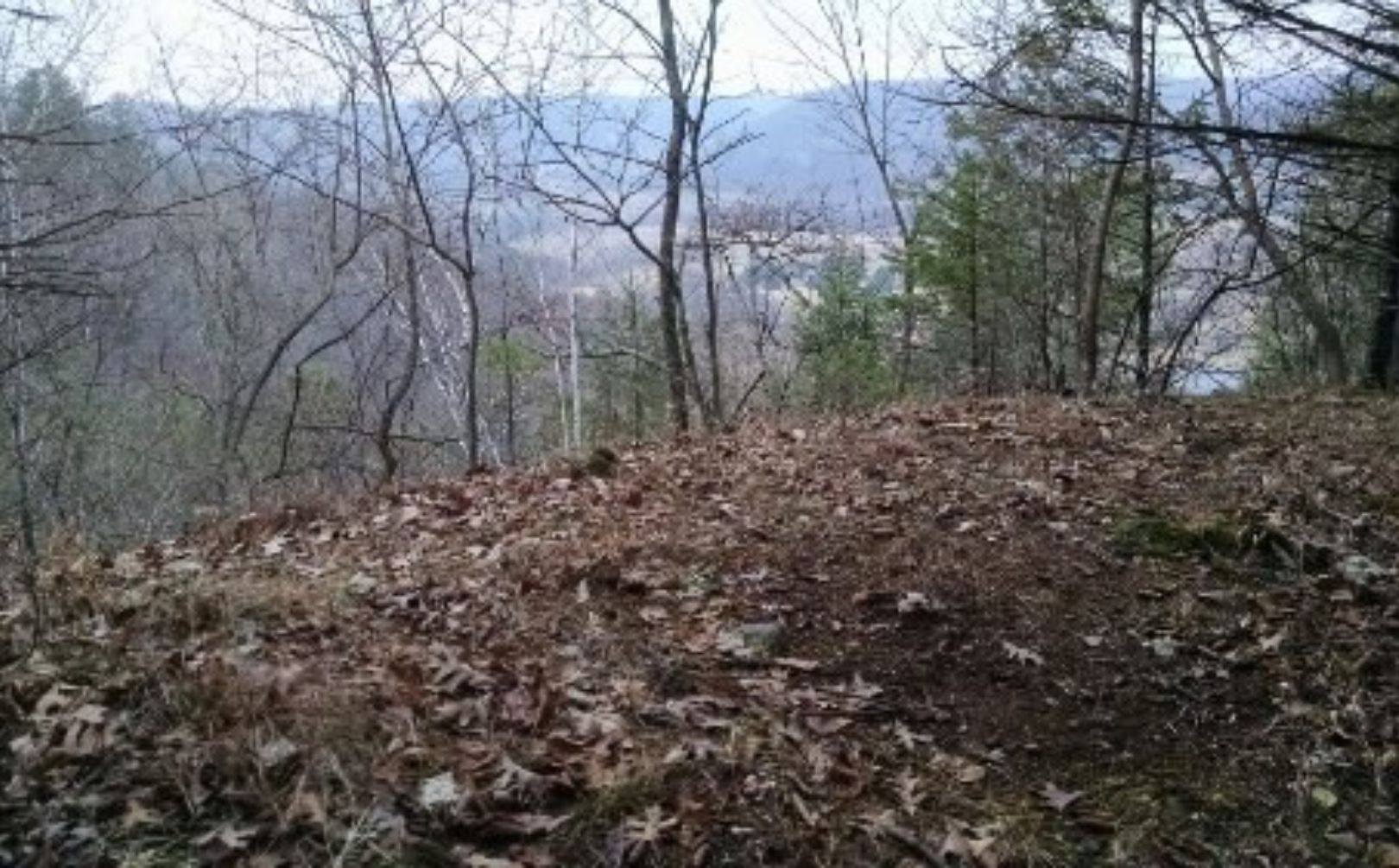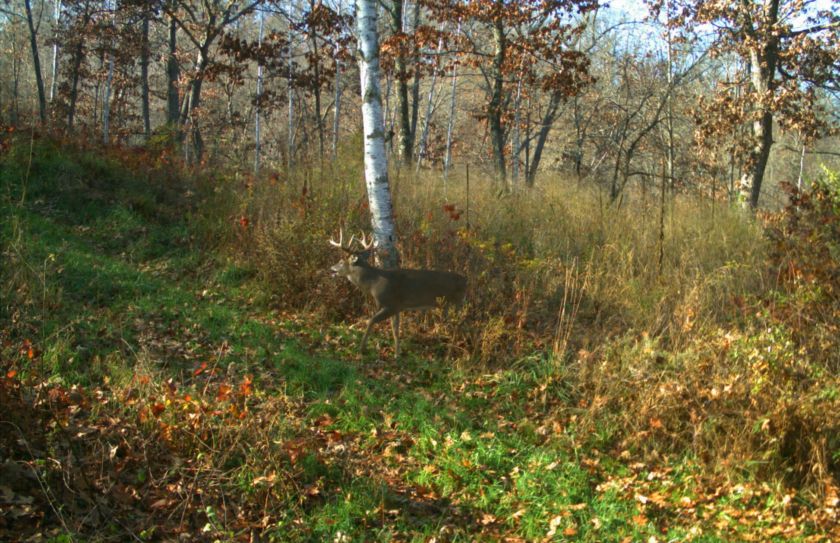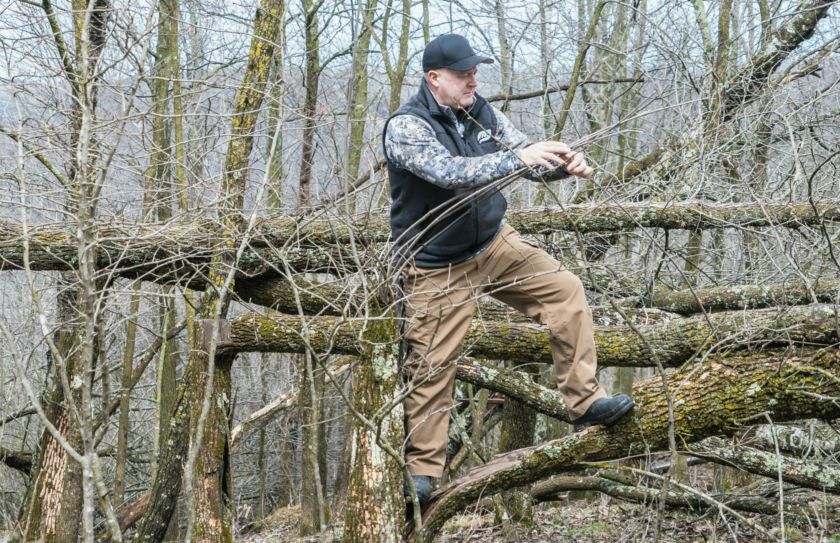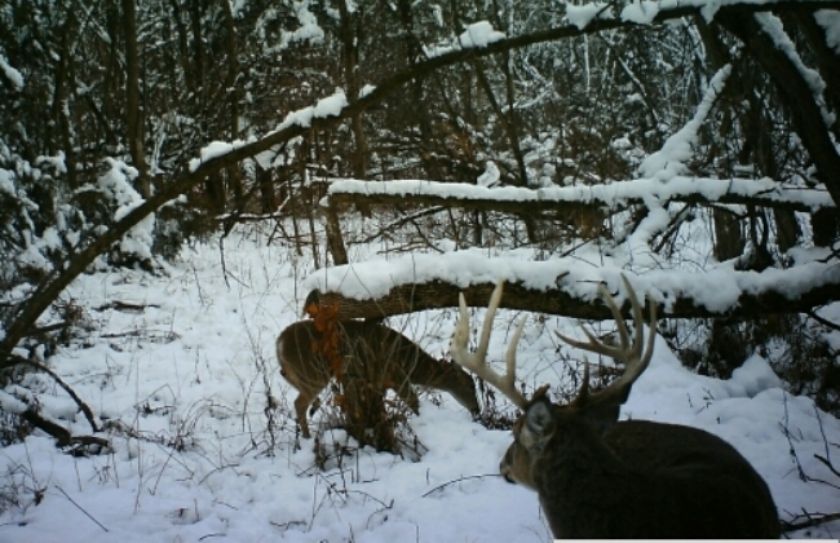
With a passion for scouting deer bedding areas, one of deer hunting's greatest mysteries to me has been trying to figure out where a mature buck spends the bulk of its day. To be honest where that deer spent the night was never at the forefront of my thought process. I can remember as a teenager that with a pellet gun in hand and a wood lot to explore like Daniel Boone himself, I was in my glory! However if while searching for the most important ingredient for squirrel stew I discovered a large deer track, I just had to figure out where he was going.
I was 16 and my brother Kevin was 14, as we set off on a cold and rainy October day to explore the Pontiac Lake State Recreation area in Southern MI. We were looking for a place to hunt with our bows, but since our father couldn't make it out to "mentor us" we had to leave the bows at home. We found a very big track that lead down a small draw through the hardwoods. It very muddy while sneaking through the thick cover of low brush along a swamp while it rained, and we slowly moved through the cover. The track lead us to a tangled mess of vines leading up to a knoll and as we quietly moved towards the top he stood up! He was a beautiful 8-point buck that was at least 3 years old. In fact, later that year I saw him again nearby, and then after gun season found him in another bed I had seen him leave from while bowhunting. Sadly, this last time I found him in his bed, he was dead from a gun-shot wound. I brought a saw out the next time I visited the area, and still to this day I have a nice set of rattling antlers courtesy of the biggest buck I had ever seen in my very short hunting career, all the way back in 1986.
That teenage adventure was long ago, but my love for finding a daytime hangout has not only not diminished, but it has shaped me to be the type of hunter and habitat manager that I am today. Where a buck beds, why he doesn't bed where other deer do, and how to kill him in and around his bedding area is the name of the game as far as I'm concerned. It's taken a lot of years of scouting bedding areas to define the patterns of daytime bedding for whitetails, but those past experiences have greatly influenced how I hunt, speak, write, and manage hunting properties for my career.
The Past
I've had a huge passion for where a mature buck beds during the day since I was a teenager. That passion in the past fueled why, when and where I hunted then, now and certainly in the future! It was easy to conclude that if I knew where a mature buck was hanging out during the day, I could fairly predictably kill him on his return to the same spot in the morning, or as he left that area to travel to food in the evening. That concept was incredibly true within the confines of the southern MI ag area that I most typically hunted in during the early years. The cool thing? That same formula has produced success for me to this very day in not only those familiar ag areas, but in the wilderness portions of the Northern Midwest, to the giant hardwoods of the East. Working with clients the past 11 years in nearly 20 whitetail states has shown me that that if you can find where a mature buck calls home during the daytime, he is "killable", anywhere a whitetail roams. During the years I have found that a mature buck will stay put in his preferred hidey-hole for a very large % of his daytime hours, until we as hunters mess it up. So as I watched the older bucks move out of their homes from along some field edge on a warm September evening, it was just a matter of making sure I had a stand in the right location for a late Oct/early Nov morning sit.
The opportunities came by getting to know where individual bucks called home during the day. In 1987 I missed a gnarly looking buck as he returned to a pine-thicket across a dried up golden rod field about a hour after light on a foggy late October morning. In 1988 a nice 7 point that tried to sneak back into his part of the ditch bank between two cornfields. In 1993 a buck that lived within a couple acres of cover offered a shot with a bow, and of course I missed, but later redeemed myself a little by shooting him with a slug coming out of that same thicket on MI's gun season opener 3 year old webbed 9 point. The next October I missed a 20" wide 11 point I'd watched all summer, after a neighbor traveled into the backside of a bedding area with an ATV in the pre-dawn hours, and spooked him to my stand location. In 1995 a beautiful 10 point that snaked his way along the Cass River to the West before turning North into the ag land every evening was another heart breaker. For several sits I watched in the evening as he made his way out into the fields, always avoiding my conservative approach of using one of 3 stands with only the "perfect" wind. I avoided the area in the morning for fear of spooking him in his transition area too far from his bedding area, and I just knew I'd get a chance if I stayed back, preserved the spot, and played it safe. Sure enough, a great evening sit and a 15 yard standing broad side shot laterand I had another miss! You'd think I would have given up but I broke my target panic and in 1996 the real heartbreaker hit.
During 1996, I watched an incredible 10 point all Summer long in the fields adjacent to our land. I hunted a small funnel to the North along the river and behind a cemetery within a narrow pinch point. I just knew that even though he lived across the fields within a small patch of red-willows I would get my opportunity on some late October or early November morning. Again I was rewarded when I heard the sound of footsteps approaching in the dark. Then the steps stopped under me. For 15 minutes I heard nothing and it was now shooting light. I thoughtmaybe a fox? A raccoon, even a grouse? When all of a sudden out he stepped out of the cover only 10 yards away. I quickly turned to him in my excitement, he heard me move on the old hang-on stand with the plastic platform, looked straight up at me, and slowly turned to walk away. That morning the target panic didn't matter, I didn't even have to fire a shot.
Finally, in 1997 my luck changed when one of the bucks I had watched all summer gave me a chance on 10/31 after I had waited for a NE wind to go after him on a back-door approach that would leave him out in the fields while I slipped into the SW corner of his bedding area from the South. He lived within a 100 yards of a small trailer and within the first hour of shooting light he offered a great broadside shot as he slipped around the SW corner to head into the wind and lay down for the day.
Whether it was during the frequent misses of the early years, or finally connecting on my first "bedding area bucks", my passion for scouting deer bedding areas was critical to my success.
The Present
Since those early years, many bucks averaging over 4 years of age have fallen to me under similar circumstances, and the absolute most important part of the puzzle was first scouting those particular buck's bedding areas. As I travel the Midwest to hunt, whether it be on private or public land, the process of scouting deer bedding areas, defining where a buck will bed within them, and then hunting cautiously while skipping around to find the right buck I want to go after within it's own bedding area. It has been really amazing to scout and hunt mature buck beds throughout the last few decades, both before and after the shot! And the beauty is that when you remove one mature buck, another buck will typically take over the same small bedding area, maybe even the same bed, and use the same patterns that lead to the previous demise of the former occupant. They often just have to grow into their new home and mature for a couple of years.
The Future
Now we live in age that with an incredible variety of opinions, experience, and practices! Most know that if your favorite hunting ground doesn't have any good bedding habitat that you can build it, because there are many practice really cuts down on the scouting when used effectively. Now, throughout the years it's become apparent to me that bucks will bed in certain areas, and does in others. There is even a difference for young and old bucksyoung and mature does. Sure the beds are all the same, doe or buck, but the location is often so vastly different! Rest assured though, if you build a bed or bedding area within a typical buck-type hang out, you will get a buck to use it no different than if you plant a turnip seed in the right soil you get a turnip! That's the easy part. However, you should always be scouting deer bedding areas to discover the patterns of just exactly where a mature buck beds, vs young bucks vs doe family groups.
Location by Sex
Doe bedding areas have a couple things in common. In my experience a doe herd is looking to be close to the food source, and they don't mind a lot of stress whether it be in the form of consistent human activity or consistent deer activity. Also, think in terms of "stems per acre". Does naturally seek fawning cover that carries a high stem density of grasses, shrubs, saplings, etc. that will not only produce favored security coverbut that will also promote a high level of scent dispersion for aid in the avoidance of predators. Think of that in comparison to a nearby food source and it's no wonder a red willow thicket on the edge of an ag field, or even an overgrown fencerow, can often be a preferred daytime doe hotspots. Think of just the opposite for a mature buck! And I say mature buck because younger dispersing yearlings or fawn bucks often find themselves caught somewhere in between the older bucks, and the bulk of the doe herd. Mature bucks avoid stress of all kinds no different than a crotchety old man. They also don't mind walking a bit to get to an all-night food source. I'm sure you can narrow down on most parcels of land where a mature buck will NOT be. Roadsides, trails, backyards, field edgesit's not to say you won't find an occasional mature buck, but very rarely in those locations if there is a substantial doe population. Of course many mature bucks can break the rules for a brief time during the early November rut, but even then I've shot a few 4-6 year olds that almost seemed to "herd" a mature doe back to their daytime bachelor pad for their rutting activity.
Conclusion
I can't stress enough how I've enjoyed a personal quest of locating daytime mature buck hang-outs throughout the last 24 seasons. At the same time I have been blessed to experience a lot of success and failures along the way of narrowing down a particular bedding area to a particular buck, and then going in for the kill. I sure wish that I had a few of those buck opportunities from the 90's back, because although they were important pieces of my development as a young hunter, they still haunt me!
As some of my clients can attest to, I often point 50 yards ahead and say, "I bet one beds in there", as we then go crashing over to a small bump, bench or flat to check it out. Whether it was during the mid 80s with my brother, on a client visit in a random whitetail state, or on a Summer buck bedding quest on public land in Southern OH, I have greatly enjoyed decades of scouting deer bedding areas to continually attempt to unravel the mysteries of a mature buck. Scouting deer bedding areas has been a critical ingredient to my success as a hunter and habitat manager, and I strongly encourage you to practice your deer bed scouting efforts often on the lands you hunt as well!


